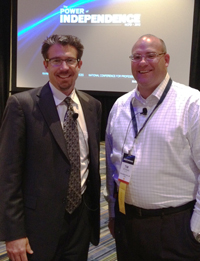New Legislation is Hoping to Help Caregivers
Contributed by: Sandra Adams, CFP®
Being a caregiver for a family member presents real-world challenges from an emotional and financial perspective. The National Alliance for Caregiving reports that there are over 40 million Americans acting as family caregivers providing over 37 billion hours of unpaid assistance to loved ones. As I wrote in a previous blog “Family Caregiving — The REAL Long Term Costs”, family caregiving can take a toll on caregivers’ health and future retirement goals if the right plans and tools are not utilized.
Recent legislation is attempting to help the millions of Americans serving as caregivers:
RAISE Family Caregivers Act
In early 2018 the president signed into law the Recognize, Assist, Include, Support and Engage Family Caregivers Act. The act directs the Department of Health and Human Services to create an advisory council charged with making recommendations on the strategy to support family caregivers. The strategy, which must be developed within 18 months, will address financial and workplace issues, respite care and other ways to support caregivers.
Employer Tax Credit for Paid Family Medical Leave
A little publicized addition in the recent Tax Cuts and Jobs Act of 2017 that took effect on January 1st, 2018, was the Employer Tax Cut Credit for Paid Family Medical Leave Time. Under the Family & Medical Leave Act (FMLA), employers must provide certain employees with the option for up to 12 weeks of unpaid, job-protected leave per year (and must maintain group health benefits during the leave). To incentivize employers to further support FMLA, the recent Tax Act provides employers with a business credit equal to 12.5% of wages paid to employees during leave (as long as the employee is paid at least 50% of their normal wages) and the credit phases in as much as 25% of wages if the employer provides 100% of continuing wages (up to the 12 week maximum).
Employers and the government are recognizing the deep impact of family caregiving on the financial futures of caregivers and are beginning to offer some support. How significant the results of these recent legislative changes will be remains to be seen. We will continue to keep you updated. In the meantime, if you are a caregiver and need additional resources, information, or need assistance in designing strategies for yourself or for your loved one, please give us a call. We are always happy to help!
The information provided does not purport to be a complete description of the developments referred to in this material, it has been obtained from sources deemed to be reliable but its accuracy and completeness cannot be guaranteed. Neither Raymond James Financial Services nor any Raymond James Financial Advisor renders advice on tax issues, these matters should be discussed with the appropriate professional.
Sandra Adams, CFP® is a Partner and Financial Planner at Center for Financial Planning, Inc.® Sandy specializes in Elder Care Financial Planning and is a frequent speaker on related topics. In addition to her frequent contributions to Money Centered, she is regularly quoted in national media publications such as The Wall Street Journal, Research Magazine and Journal of Financial Planning.










